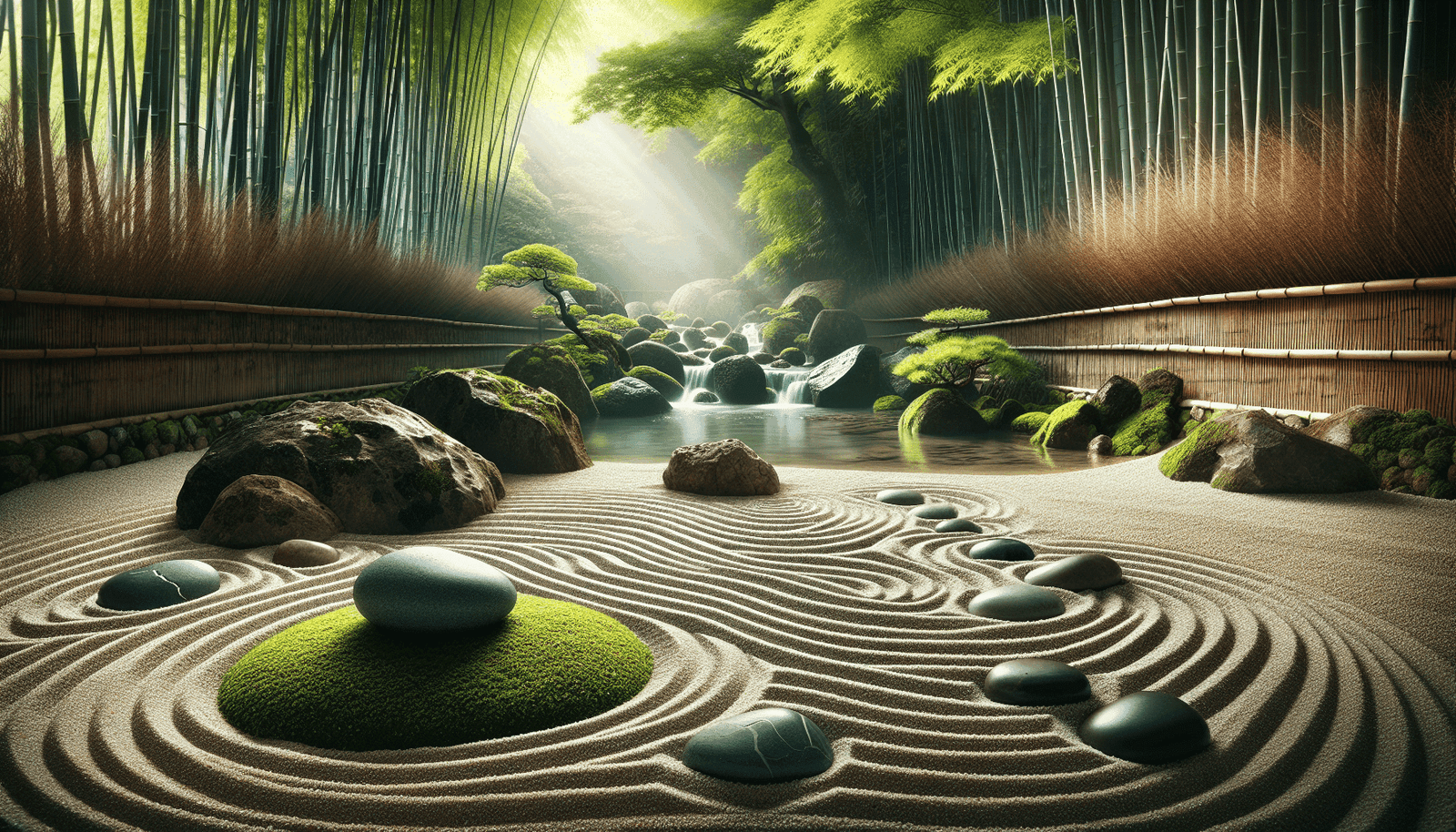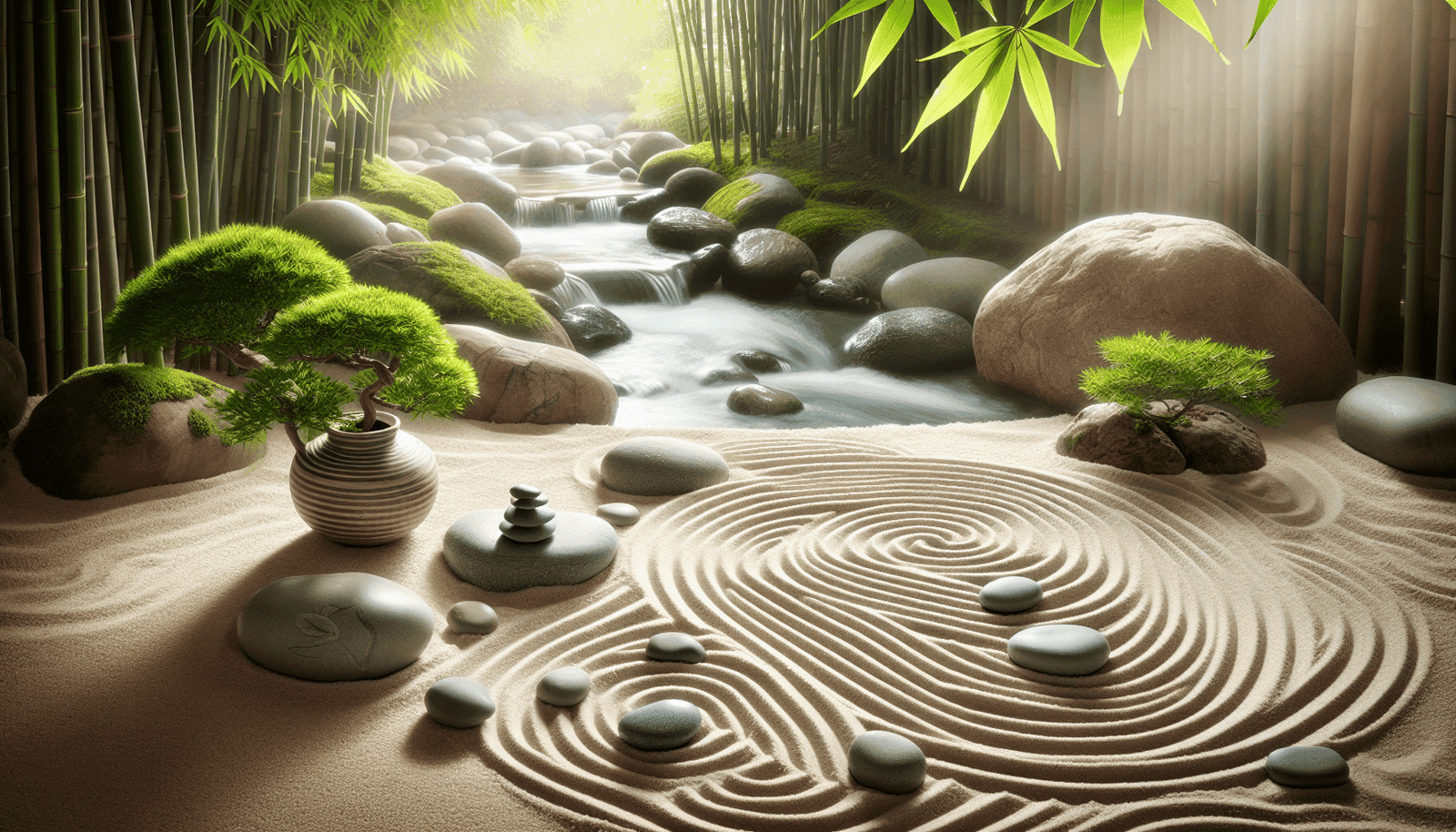Find Calm: Have you ever wondered how to maintain your composure amidst the never-ending demands of modern life? The reality of daily commutes, back-to-back meetings, endless to-do lists, and the constant barrage of notifications can easily overwhelm anyone. Yet, within this hectic whirlwind, it’s essential to discover methods to maintain your tranquility. Herein lies a guide to finding peace even during the busiest of days—a manifesto for reclaiming your calm.

Table of Contents
The Importance of Inner Peace
Finding you are constantly frazzled can impact not just your wellbeing but can also diminish your productivity and affect your personal relationships. Inner peace, however, is not just about feeling relaxed; it’s a foundational state that supports mental health and enhances overall performance.
Being peaceful does not mean escapism; rather, it involves engaging with life’s challenges with equanimity and mindfulness, offering clarity and fostering a sense of well-being. By achieving a state of calm, you enable yourself to navigate through stress with poise, akin to a ship cutting smoothly through turbulent waters.
Recognizing the Signals of Stress
Become aware of the symptoms that indicate your life might be veering into chaotic territory. These signs include fatigue, irritability, muscle tension, and difficulty concentrating. Catching these indicators early can be pivotal in preventing stress from escalating into anxiety or burnout. Cultivating awareness is your first step towards meaningful change.
The Historical Context of Finding Calm
The pursuit of inner peace is as old as human civilization itself. Philosophies like Stoicism from ancient Greece have long emphasized rational calmness, while Eastern philosophies like Buddhism have extensively explored the art of mindfulness and meditation. Understanding these cultural and historical perspectives can provide a rich framework for your own journey towards inner calm.
Ancient Wisdoms
Historically, societies have understood the importance of tranquility. For instance, in Zen Buddhism, ‘zazen’ (sitting meditation) is used to calm the mind and attain insight, reaffirming that a stable mind can meet daily life with a composed demeanor. Such practices underline the longstanding human tradition of valuing and achieving mental peace.

Incorporating Mindfulness into Your Day
Mindfulness is the deliberate act of paying attention to the present moment without judgment. It is both a practice and a state of mind, offering a direct antidote to the chaotic noise around you. Thankfully, weaving it into your daily schedule doesn’t require extensive time or special equipment.
Mindful Breathing
An effective way to incorporate mindfulness into your day is through mindful breathing. Whenever you notice your mind resuming its chatter, take a moment to focus solely on your breath. Inhale deeply, hold for a few seconds, and then release slowly. By simply redirecting your attention to breathing, you can interrupt the cycle of stress and create a moment of tranquility.
Grounding Techniques
Grounding techniques anchor you in the present by focusing on physical sensations or immediate surroundings. A simple method is the “5-4-3-2-1” technique: Identify five things you can see, four you can touch, three you can hear, two you can smell, and one you can taste. This method brings an immediate sense of presence, warding off the feeling of being overwhelmed.
Structuring Your Environment for Peace
Craft an environment conducive to calmness. Your surroundings can profoundly impact your mood and stress levels, so make conscious choices in structuring your space.
Declutter Your Space
A physical space in disarray often leads to mental clutter. Spend a few minutes daily organizing your workspace or living area. By creating a clean and orderly environment, you minimize distractions and reduce sensory overload, freeing up mental resources to focus on what truly matters.
Incorporate Natural Elements
Natural elements such as plants, natural light, and soothing colors can foster a sense of peace in your environment. Consider adding greenery to your home or workplace. Research indicates that plants can improve mood and focus, acting as natural stress busters.

Mastering the Art of Saying No
In the pursuit of inner calm, understanding the power of a positive ‘no’ is vital. Over-committing is a sure pathway to chaos. Learn how to assert yourself and set boundaries, balancing obligations with personal wellbeing.
Prioritization and Time Management
Begin prioritizing tasks based on their true importance rather than their urgency. Use tools like time blocks in your calendar, ensuring that you allocate undisturbed slots for focused work alongside breaks for rejuvenation. Mastering this balance allows you to manage your time effectively without the weight of unnecessary commitments.
Communicating Needs Clearly
Effective communication is key. When declining new responsibilities, communicate clearly and assertively to avoid misunderstandings. Express gratitude for the opportunity, but explain your current priorities and limits. This ensures you respect your needs while maintaining professional relationships.
Embracing Physical Wellness
The body and mind are inextricably linked, and nurturing physical wellness can greatly contribute to mental calm. Regular exercise, a balanced diet, and sufficient sleep serve as pillars of a serene existence.
Regular Exercise
Exercise is a proven stress reducer. It releases endorphins, which serve as natural mood elevators and stress relievers. Whether it’s a brisk walk, yoga, or a more structured workout, regular physical activity can dramatically improve your state of mind.
Nutrition and Hydration
What you consume fuels not only your body but your thoughts too. Prioritize a diet rich in whole foods, minimizing processed and high-sugar items that can lead to mood swings and energy crashes. Stay hydrated as dehydration is a frequently overlooked contributor to fatigue and irritability.

Digital Detoxification
In an era where technology is ubiquitous, creating digital boundaries is crucial. The constant presence of screens can heighten anxiety and perpetuate a feeling of urgency.
Scheduled Breaks from Screens
Designate specific times to unplug. This could mean one screen-free hour in the evening or a full digital detox day weekly. Use these periods to reconnect with life offline, whether through reading, meditating, or spending quality time with loved ones.
Mindful Consumption
Control what information you consume. Engage with content that enriches and inspires rather than detracts from your peace. Curate your social media feeds conscientiously, unfollowing accounts that spark negativity or comparison.
Practicing Gratitude
Gratitude shifts your focus from what is lacking to what is ample in your life. Regularly practicing gratitude can diminish toxic emotions, increase happiness, and foster resilience against stress.
Keeping a Gratitude Journal
Maintain a daily gratitude journal, writing down three things you are grateful for each day. This simple practice trains your mind to notice and appreciate the good, guiding you towards a more peaceful state.
Gratitude Rituals
Incorporate gratitude into daily routines. Reflect on what went well at the end of each day, or pause before meals to acknowledge the food’s journey to your table. These rituals can anchor you in positivity and contentment.

The Role of Professional Help
There is no shame in seeking support from mental health professionals. Therapy can offer personalized strategies for achieving calm and tackling stress more effectively.
Benefits of Professional Guidance
Engaging with a therapist provides a safe space to explore emotional hurdles and develop coping mechanisms. From stress management techniques to cognitive restructuring, professional help can pave the way for lasting inner peace.
When to Seek Help
Consider reaching out when stress becomes unmanageable or affecting daily functioning. Acknowledging the need for help is a courageous step towards healing and self-preservation.
Leveraging Technology for Calm
Not all technology is disruptive; some can assist you in fostering calm. As digital solutions continue to evolve, explore tools designed to support your peace quest.
Meditation Apps
Explore meditation apps like Headspace or Calm, which offer guided sessions tailored to various needs, from anxiety reduction to improved sleep. Integrating such resources into your routine can enhance your journey towards tranquility.
Productivity Tools
Use productivity tools like Trello or Asana to organize tasks, minimizing overwhelm by visually mapping out obligations. Structure helps maintain focus and prevents the chaos that contributes to stress.
Conclusion: Your Personal Pathfinder to Calm
Reclaiming calmness in a world that celebrates busyness is both challenging yet profoundly rewarding. Establishing these practices and perspectives can transform how you experience and respond to daily stresses, cultivating a resilient and peaceful mind.
Remember, the journey towards inner peace is unique to each individual, and progress is more important than perfection. Continually seek harmony in thoughts, actions, and environments. Strive for moments of reflection and breathe deeply—the calm you seek is within your grasp.
Reader Engagement
What strategies have you found helpful on your path to calmness? Share your experiences and thoughts to inform and inspire others. And should you seek more guidance, explore additional articles, such as “Mindfulness Practices for Beginners” or “Setting Effective Work-Life Boundaries,” to further bolster your quest for peace.
By integrating these concepts into the fabric of your daily life, you open the door to a more centered and serene existence, embodying peace amidst the hustle.
Hot✈️ Find Calm at this cozy City Sanctuary with terrace, Barcelona, Spain

